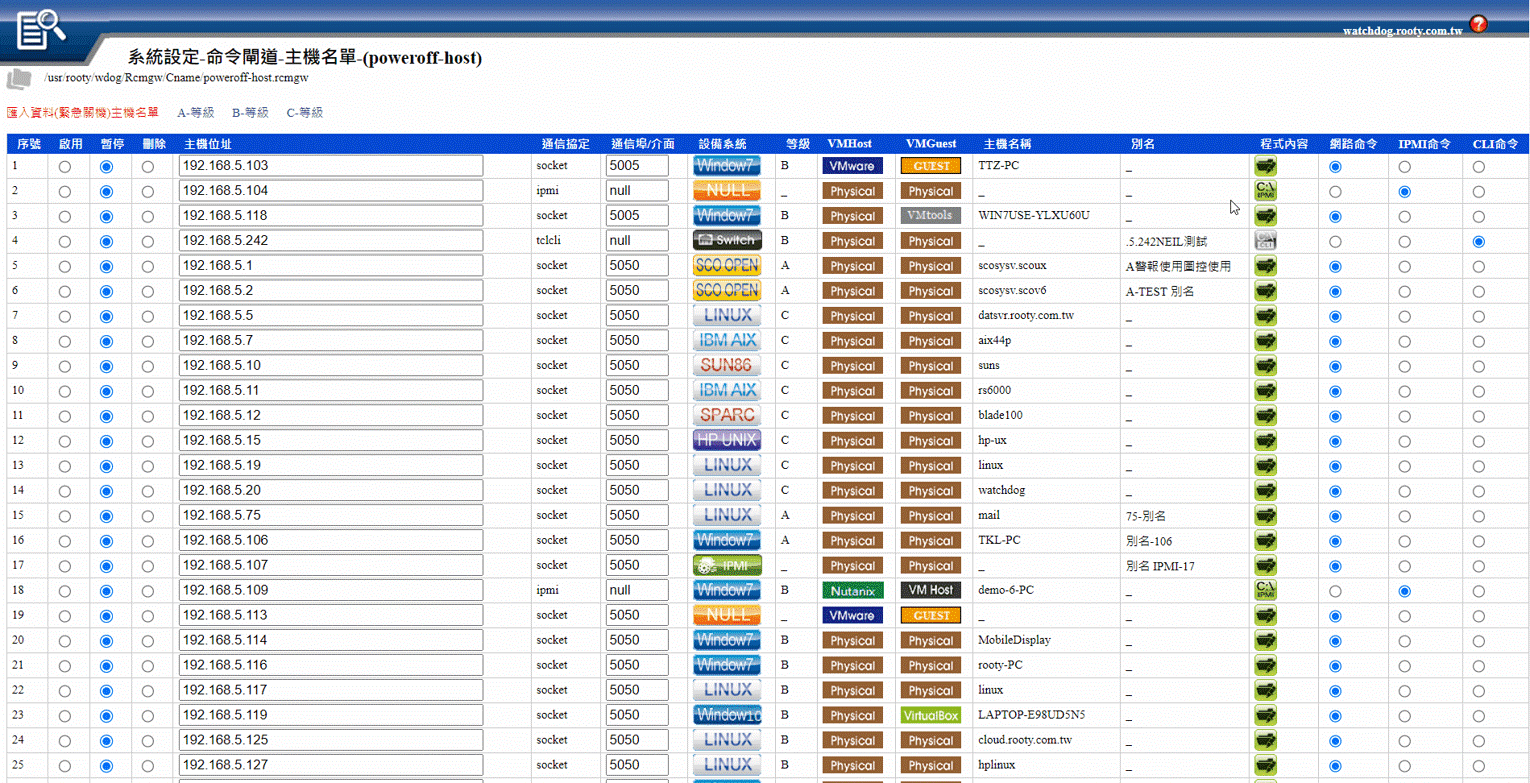
A comprehensive IT operations monitoring system not only needs to perform full-scale detection and monitoring of information equipment but also must have the ability to issue commands for emergency handling and automated preset state execution.
When the monitoring target meets the alert conditions during the detection process, the Watchdog system will not only issue an alert message for notification but also execute a set of predetermined commands.
This set of commands is called the 【Command Gateway】, and multiple different 【Command Gateways】 can be combined into a set of 【Linked Control】.
Methods of Executing Commands
➢ Network Commands:
Using agent commands, a command gateway can execute collective commands on up to 256 servers simultaneously, such as shutdown.
➢ Server Hardware Layer Control:
Using IPMI (such as ILO, IMM, iDRAC) to directly control the server's power supply for on/off operations.
➢ CLI Supported Device Operations:
For devices that support CLI (such as Switch), control can be performed through simulated telnet, ssh, etc.

Application Scenarios for Command Gateway:
➢ Issuing Alerts:
When issuing alerts, the system will execute the predetermined set of commands simultaneously.
➢ Cancelling Alerts:
When cancelling alerts, the system will also execute the predetermined set of commands.
➢ Direct or Linked Execution:
Commands can be executed through virtual buttons, physical buttons, mouse clicks, or various digital input (DI) triggers. Examples include one-key shutdown and emergency shutdown.

Additionally, the Watchdog system supports diversified execution settings, allowing multiple 【Command Gateways】 to be set in the same 【Linked Control】 and arranging their priority and execution intervals as needed.